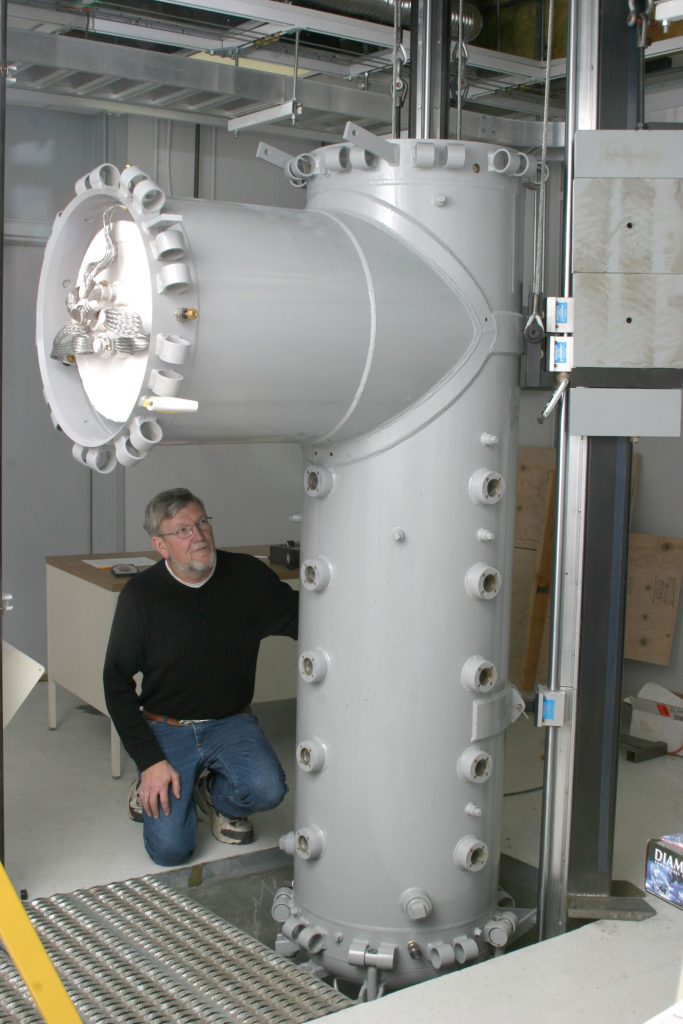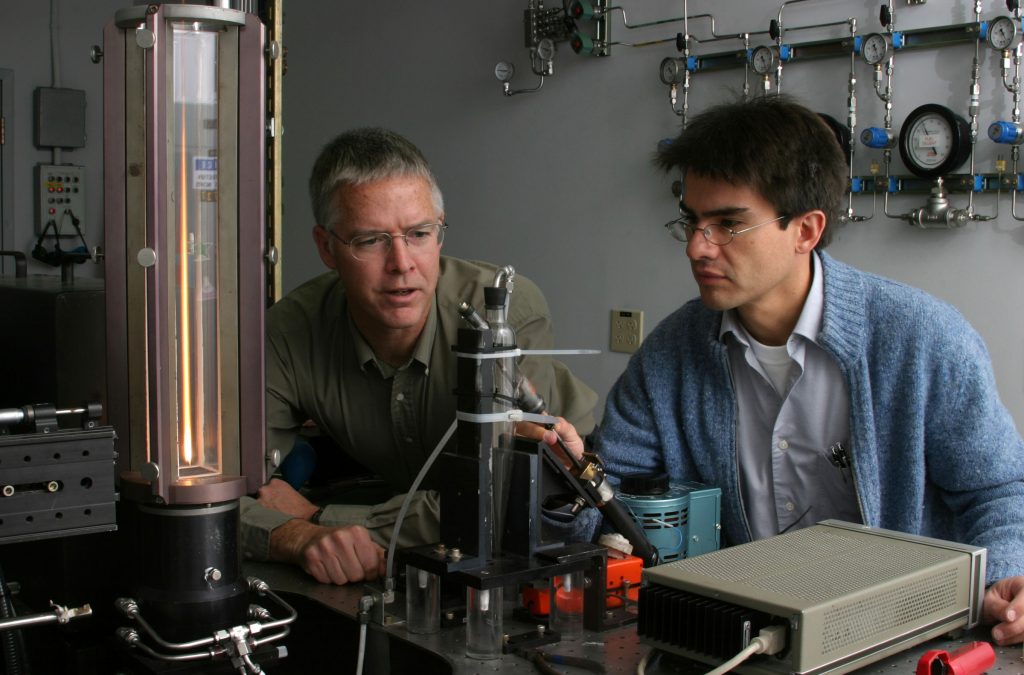
Download 300dpi JPEG image, “al-salmi.jpg,” 552K (Media are welcome to download/publish this image with related news stories.)
Livermore, Calif. — Sandia National Laboratories researchers here are studying the burning characteristics of coal to prepare the way for the coming of a hydrogen economy.
That’s because while there are many long-term options for providing hydrogen as a fuel of the future, coal is the leading contender to provide a hydrogen source in the near term.
“While some day we may be able to produce hydrogen by breaking up water molecules in association with the high-temperature heat from nuclear power reactors, or through renewable energy technologies, right now the most cost-effective way to produce hydrogen is with coal,” says Chris Shaddix, principal investigator for clean coal combustion at Sandia’s Combustion Research Facility.
Sandia is a Department of Energy (DOE) National Nuclear Security Administration laboratory.

Download 300dpi JPEG image, “shaddix-molina.jpg,” 512K (Media are welcome to download/publish this image with related news stories.)
Shaddix and his colleagues are involved in a number of experiments to optimize the combustion of coal to produce the most energy and the least possible pollution. While traditional coal combustion produces harmful emissions, modern plants can meet environmental regulations for burning coal cleanly, Shaddix says. As the cost of competing fuels — particularly natural gas — climb, burning clean coal becomes cost competitive.
Add in the possible benefits of separating and storing carbon dioxide (CO2) emissions from the power plant stacks and coal looks very promising for generating both electricity and hydrogen to provide a bridge to that future technology. “Utilities are starting to invest in coal,” says Shaddix.
Two approaches
Two different approaches to burning coal are now under study:
- The first, called oxy-combustion, combines coal with pure oxygen.
- The second, called gasification, burns coal only partially to create a fuel-gas.
The first approach is driven by concern over emissions of CO2 and other pollutants. The burning of coal in oxygen is a near-term solution that with current knowledge can produce exhaust streams that are close to pure CO2, says Shaddix. Harmful pollutants like nitrogen oxides, sulfur compounds, and mercury are virtually eliminated.
The oxy-combustion approach is favored by companies in Japan, Canada, Germany, and elsewhere, where pilot plants are under construction.
U.S. companies tend to favor gasification technologies, which offer higher efficiency and low pollution formation. One of these technologies, called steam reformation, combines the coal with steam in a hot environment to produce a “syngas,” composed mostly of carbon monoxide (CO) and hydrogen.
Once the syngas is produced it can be burned directly in a turbine to produce power. Or the syngas can be further reacted with more steam to shift the remaining CO to CO2 and produce more hydrogen.
The CO2 can be stored in oil and gas fields and the hydrogen can be used in many potential applications: to power a car in an engine or fuel cell, to power a turbine to produce electricity, or to fly an airplane.
The DOE has already demonstrated this process in two pilot projects. Now, several commercial proposals are afoot in the U.S. for utilities to build plants without government support.
CRF role
Working with the National Energy Technology Lab, Morgantown, W. Va., the CRF is focused on understanding the chemistry and physics of coal combustion, using state-of-the-art diagnostic capabilities and modeling expertise. “We apply computational models of reacting particles to the data to understand why we see the results we see,” says Shaddix.
Shaddix and Alejandro Molina, a Sandia postdoctoral student, have been working in a small-scale lab to analyze coal combustion.
“It is very important to understand how fast [coal] burns and releases energy,” Molina says. Burning coal in pure oxygen instead of air eliminates some separation problems, leaving water and CO2, which can be stored, or sequestered, Molina says.
One problem with this oxygen approach has been a high flame temperature, he continues, which can rapidly destroy the metal burner materials. “The question is: what is the right proportion of oxygen and CO2?”
After two years of small-scale research, work is now under way to bring two other CRF facilities into the research. A gasification lab will help the researchers study the behavior of coal gas under pressure. A two-story flow reactor that will help the team study the oxygen-coal combustion with recycled CO2. Tests in this reactor are expected to begin in a few months.